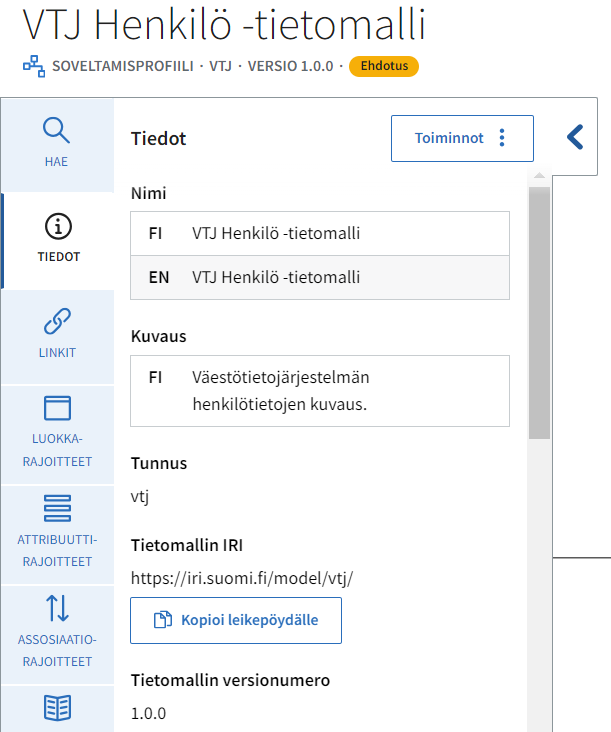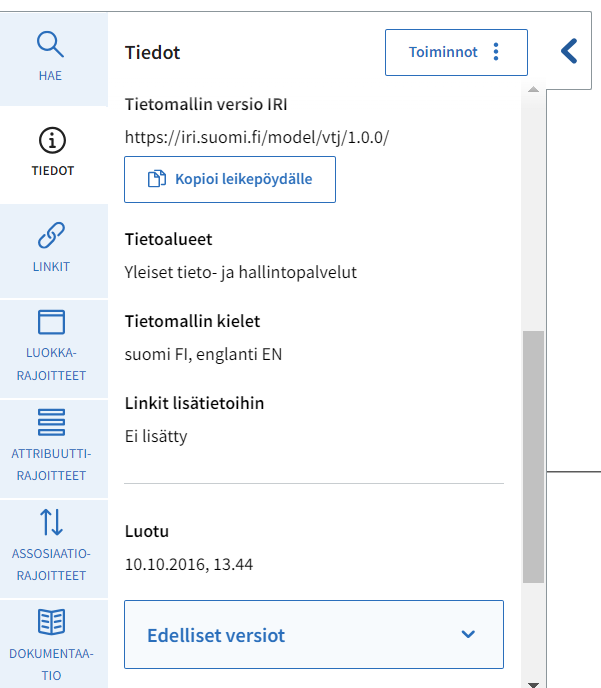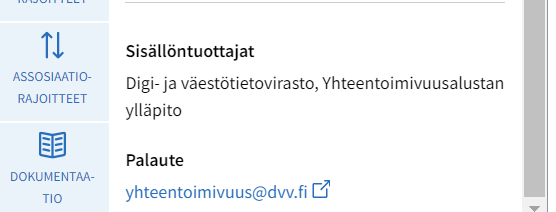The information describing the content of a core vocabulary and an application profile are almost identical, but some differences still remain. The following describes the information on the application profile.
| Field | Description |
|---|---|
| Name of the data model | The name that is shown in the lists and the search results. All the languages used in the data model should have their own name field. |
Description (optional) | A short textual description of the content of the data model and its intended use. All the languages used in the data model should have their own description field. If there is more information about the data model, the information should be shown in the Documentation tab. |
| Prefix | A string of characters that is used for identifying the data model in the Data Vocabulary tool. The prefix is shown in the IRI address of the data model and its resources (class, attribute and association restrictions). |
| Model IRI address | A string of characters that is used for identifying the data model on the internet. This address is machine-readable and can be used for example in the API interfaces. Click the Copy to clipboard button if you want to save the IRI address to the clipboard of your computer. |
| Release version number | All published data models have a version number. If the status of the data model is Draft, the data model does not have a version number. A data model with a Draft status is only shown to the logged-in members of the contributor organisation. |
| Field | Description |
|---|---|
| Version IRI of the data model | All the versions of the data model have same general IRI address. Further the data models’ different versions have their own IRI addresses, which also identifies the version of the data model. In these cases, the IRI address includes also a version number. Click the Copy to clipboard button if you want to save the IRI address to the clipboard of your computer. |
| Information domains | Information of which information domain or domains the data model belongs to.
|
| Languages of the data model | Information of the languages used for describing the content of the data model. It is possible to give one or several languages. |
Links to additional information | Links to further information, for example to a project blog or a paragraph of law. |
Created | Time stamp: Date and time when the data model was created. The logged-in users of the same organisation can also see the name of the person who created the model. |
| Prior versions | Click the chevron to open a list of the former versions of this data model, if they exist. |
| Field | Description |
|---|---|
| Contributors | Information on the contributor (organisation) that has created the data model and is responsible for maintaining its content. A data model have more than one contributor. |
Feedback | The contact information for the contributor organisation by which the users can send feedback and questions regarding to the information content etc. |


